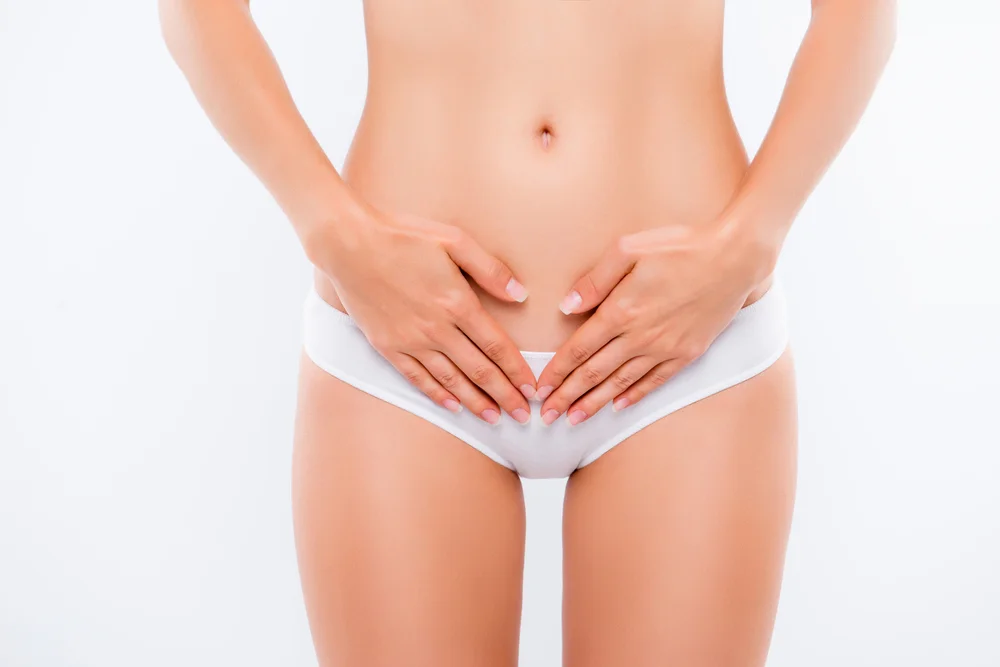Key Takeaways
-
Compression garments decrease swelling, support tissue healing, and assist in contouring results. Wear them round-the-clock during the initial days to optimize swelling management and minimize bruising.
-
Follow a phased wear timeline: continuous wear for 24–72 hours and the first two weeks, part-time wear during weeks three to six, and gradual discontinuation after six to eight weeks based on healing.
-
Select the appropriate garment for your surgical site, method and your recovery speed by emphasizing breathable, stretchable, hypoallergenic fabrics and precise sizing.
-
Improper wear heightens the chance of seromas, poor skin retraction, irritation, or nerve compression, so don’t remove early, wear too long, or use an ill-fitting garment.
-
Check in on healing and transition garment stage and size as swelling subsides, and complement garments with wound care, hydration, nutrition and approved activity light activity for optimal results.
-
If you have severe pain, signs of infection or persistent skin changes, reach out to your surgeon and discuss adjusting or discontinuing garment wear under medical supervision.
Liposuction garment wear duration explained is the common wear time for patients to compression garments after liposuction. Suggested wear time is anywhere from 2 to 12 weeks depending on the area treated, your surgeon’s guidance and your healing pace.
The shorter wear is good for minor contouring, while the longer wear assists with swelling control and skin retraction. Follow-up visits and tapering of day use control the schedule.
The bulk of the text details by-area timelines and care advice.
Compression Benefits
Compression garments are a focal point of early and mid‑stage recovery following liposuction. They exert consistent pressure to addressed sites, constrain inflammation, assist in regulating bruising, and hold structures as they mend. Below are targeted descriptions of the core benefits — and how to wear garments to achieve optimal results.
Swelling Control
Compression applies consistent pressure to restrict pain-causing swelling in treated areas. This constant pressure decreases the area in which fluid can accumulate, aiding the body in reabsorbing edema more rapidly and minimizing surface puffiness.
With controlled compression, excessive fluid buildup is avoided and the reduction of edema can proceed more rapidly by increasing circulation and lymphatic flow in the vicinity of the surgical region. Less swelling usually equates to less pain and easier movement during those initial post-surgery days.
It turns out that reducing swelling with compression garments can shorten overall liposuction recovery time because tissues settle sooner into their new positions. Most surgeons advise compression benefits of wearing your garments around the clock during early recovery, only to be removed when bathing and tending to wounds.
Fluid Drainage
Compression promotes any excess surgical fluid to drain and be reabsorbed by the body by holding the tissues together and increasing lymphatic drainage pathways. This mechanical support accelerates clearance of serous fluid and blood that would otherwise accumulate.
Good drainage makes the seromas and hematomas that can occur at the surgical site less likely, which both can require drainage or delay healing. It’s important to wear a garment that’s tight enough — but not too tight — as something too loose won’t help drainage, and something too tight might impair circulation and cause discomfort.
Wearing compression regularly keeps a wound clean and promotes healing by minimizing fluid pockets that bacteria love. Regular use reduces the risk of infection and associated complications.
Skin Retraction
Compression garments help skin to ‘adhere’ to the body’s new contour once the fat is removed by hugging the skin close to the underlying tissues during collagen remodelling. This support minimizes the risk of sagging skin or uneven cellulite.
Steady compression encourages skin retraction and avoids dimples. As swelling subsides, stage compression garments — firmer or uniquely cut pieces — can be utilized to sustain support and adjust shaping.
Good skin retraction is the secret to smooth, natural‑looking results post‑liposuction and patient satisfaction.
Contour Shaping
Compression benefits define your body shape post-liposuction by stabilizing and keeping soft tissues aligned during healing. Stabilized tissues don’t shift around so there is less uneven healing.
Wrapping with targeted wraps or bodysuits is great for areas like thighs, arms or chin lipo, providing compression where it’s needed. Contour shaping with compression garments adds to long‑term satisfaction with plastic surgery results.
Comfort and Support
Supportive compression offers instant relief by minimizing motion‑induced pain and stiffness. The right garment can further help to keep you upright and make activities of daily living feel much better during recovery.
Pick breathable, stretchy fabrics to reduce skin irritation and heat blisters. Here’s a brief overview of major garment types and characteristics.
|
Garment Type |
Key Features |
Best Use |
|---|---|---|
|
Full bodysuit |
Even compression top-to-bottom |
Trunk and multi-area liposuction |
|
High-waist shorts |
Focus on abdomen and flanks |
Abdominal and thigh work |
|
Arm sleeves |
Light to medium support |
Arm contouring |
|
Chin straps |
Small, targeted pressure |
Submental liposuction |
Wear Duration Timeline
Compression is at the heart of the liposuction wear duration timeline. Below is a explicit phase-based timeline spanning immediate post-op care to long term tapering, with timing, intent and pragmatic steps to monitor progress.
1. The Initial 24-72 Hours
Keep it on except for rapid washes or so. This is when unimpeded compression most efficaciously restricts nascent bloat and holds structures firmly in place. Continuous fit decreases the chance of fluid pockets and alleviates pain by supporting the operated areas.
Do not go a day without wearing them, as these gaps only extend the swelling and annoyance. If you experience any severe pain or numbness, or any indication that the garment is pinching or bunching, contact your surgeon immediately and adjust or replace the garment.
2. The First Two Weeks
Wear most if not all day throughout this period—usually 24/7 for the majority of patients. This phase is key to maintaining bruising and fluid retention low and to directing early skin retraction.
Swelling and bruising typically decrease significantly by week two. However, some swelling may remain. Adhere to your surgeon’s advice regarding garment care, padding, and dressing changes.
Easy walking is permitted with permission, wear during activity and no strain. The majority of regimens require steadfast compression for approximately 4 weeks straight, so this time frame tends to overlap with the latter.
3. Weeks Three to Six
Start shifting to part-time wear when swelling subsides and comfort permits. MOST PATIENTS transition to day-only compression or alternating days/nights per surgeon’s discretion.
Keep wearing compression garments to help with additional swelling reduction and skin tightening. As the oedema reduces and clothes feel loose—measure and downsize to keep compression working.
Wash dresses often for best pockettime fit and freshness. For higher-volume or multi-area liposuction anticipate extended periods of compression—typically 6–8 weeks—and multiple sizes as your contours shift.
4. Beyond Six Weeks
At six weeks most patients can wean off or discontinue regular compression based on healing status and contour stability. Many return to working out and may prefer more aggressive support during workouts.
Work with your surgeon to determine if you should transition out of garments or toward lighter athleisure or shapers for comfort and scar management. Others extend compression to avoid seroma or sharpen contour results — ceasing prematurely invites fluid accumulation and less-than-ideal shaping.
Six months, near-final results show for most, but settling can persist up to a year.
Checklist
-
Days 0–3: continuous wear, monitor fit and pain.
-
Weeks 1–2: 24/7 wear, follow dressing care.
-
Weeks 3–6: shift to daytime/part-time, change sizes as needed.
-
Week 6+: reassess, phase out or substitute light support.
Influencing Variables
Various variables impact how long and which type of compression garment is ideal post-liposuction. These factors impact swelling management, skin re-draping, pain and final contour. Think surgical site, liposuction method, personal healing speed and surgical scope collectively when strategizing garment wear and adapt as healing progresses.
Surgical Area
Compression requirements vary by location. The chin/neck and jawline typically employ thin chin straps or wraps that sit under the chin and around the head, which can be worn full-time from one to three weeks, then part-time. Arms and thighs require sleeves or shorts that extend over the treated zone. These garments help avoid uneven compression leading to indentations or ridging.
The abdomen and flanks usually require high-waist panels or full-body pieces that offer consistent, firm compression over a wider area. These locations often necessitate extended wear, generally two to six weeks, due to lingering edema. Greater or several regions need more extensive protection – and frequently for extended time periods.
If both abdomen and thighs are addressed simultaneously, a hybrid piece or layers may be required to maintain the compression. Right protective coverage implies that the garment must lie flat against skin and not create localized pressure points that cause puckering.
Liposuction Technique
Varying methods alter the trauma factor to tissues. Tumescent liposuction, which utilizes fluid to minimize bleeding, is generally less traumatic and can permit shorter compression—sometimes nearer to two weeks—if swelling and bruising are minimal. Conventional or aggressive methods that excise higher amounts tend to induce greater tissue trauma and require extended compression, frequently six weeks or more, to support contouring and mitigate rippling potential.
Match compression level to method. Early post-op compression, say 20–30 mmHg in the initial week, is frequently recommended for peak swelling and pain control, with lower or graduated compression often thereafter as swelling abates.
Individual Healing
Healing speed varies widely. Age, skin elasticity, smoking, nutrition, and medical history all impact how fast the swelling and bruising dissipate. Watch for recovery indicators—reduced swelling, fading bruises, increased comfort—as cues for when to scale back your wear time.
Calibrate clothing wear to advancement, not a schedule. Track milestones: steady daily reduction in swelling, ability to wear looser garments without excess movement, and returning range of motion. These indicators assist determine when to transition from solid to lighter compression.
Extent of Surgery
How much fat is taken out and if procedures are combined influence requirements. High-volume liposuction or combined procedures such as abdominoplasty need extended compression for healing and support. Little, localized liposuction could require just a short stint.
Rethink fit as swelling recedes. Something that was tight day one may be loose after weeks, lessening efficacy. Occasionally, ceasing compression prior to around three weeks endangers rippling or puckering. Others have mixed findings, so customize to the patient and operation.
Improper Wear Risks
Improper wear jeopardizes recovery and alters final surgical outcomes. Wear time, fit, hygiene and how you adjust clothing as swelling subsides all impact recovery. Here, then, are the primary risks associated with wearing things too short, too long, or the wrong way, a handy ‘how NOT to wear it’ checklist.
Too Short
Taking off the garments too early increases swelling and postpones tissue settling. Leaving compression off prior to roughly three weeks can cause rippling or puckered skin and gives fluid a place to gather. Seromas and hematomas are more common when support is pulled early.
Even a few hours of skipping wear lets swelling return, resulting in increased pain and an extended recovery. Under compression further weakens skin retraction. Without consistent pressure, the skin and sublayer tissue won’t mold seamlessly to new shapes, resulting in patchy outcomes.
For instance, patients who abandon garments in week two frequently complain of more contour irregularities than their full compliance peers. Adhere to your surgeon’s suggested minimum time for each recovery phase. That time frame corresponds to how long tissues require consistent compression to restrict fluid accumulation and direct correct healing.
Too Long
Extended use of tight compression can irritate the skin and lead to dents. Pressure for an extended period of time can compress superficial nerves, which causes numbness or strange sensations. Top that off with added muscle tension from stress, and you have a recipe for muscle strain.
Switch to less support or go bra-less once healing landmarks have been reached (i.e. Decreased pain, little drainage, stabilized swelling). Watch for signs that you should scale back: persistent redness, pressure sores, or increasing stiffness. These are signs that it’s actually doing damage, not good.
Incorrect Fit
A poorly fitting piece of clothing causes inconsistent pressure and may hinder circulation. Too tight a garment limits movement and breathing, can cause excess stiffness, and risks skin breakdown. Too loose a piece of clothing does not control swelling and provides insufficient contour support.
Measure carefully and choose sizes for every phase of recovery. Swelling will subside, so move down to a smaller size to maintain compression efficacy. Have a minimum of two pieces to rotate during washing. Not cleaning and rotating garments can cause skin irritation/infection.
Common garment mistakes to avoid:
-
Taking clothes off before the minimum advised, particularly within the first three weeks.
-
Wearing a single garment constantly without a clean spare.
-
Choosing garments by feel rather than measurement.
-
Ignoring signs of skin change, numbness, or increased pain.
-
Skipping short periods of wear, allowing swelling to rebound.
-
Failing to downsize as swelling subsides.
Garment Selection
Picking the right compression garment is a key post-lipo decision. It provides the support and compression that control swelling, minimize bruising, and assist tissues to settle into their new contour. Think procedure location, anticipated recovery timeline and personal comfort requirements when selecting garments, which come in a range of compression grades, fabrics and constructions. Aligning these with each stage of recovery enhances efficacy and comfort.
Material Matters
Breathable, stretchy, and hypoallergenic fabrics minimize heat and skin irritation, yet maintain pressure even. Seek out blends with nylon and elastane or medical-grade microfibers that stretch but snap back so compression remains consistent. Wicking fabrics transport moisture from the skin – that aids in preventing rashes in prolonged daily wear.
Elastic garments of shape-holding maintain the same compression as before—crucial, since a sagging garment is no longer serving its purpose. Seamless or flat-seam construction reduces friction and minimizes risk of abrasion along incision lines. Forget heavy cotton blends that soak sweat and weigh you down — those can make those post-op first days much more miserable.
Sizing and Fit
Get exact measurements – take the measurement standing up and use the manufacturer’s size chart by metric measurements. Garment selection is important; trying garments on prior to surgery allows you to test tightness and maneuverability. A good fit is snug but not suffocating.
Patients usually require more than a single size as swelling settles and shape changes, so expect to purchase 2+ sizes or garments with adjustable closures. Details like zippers or hook-and-eye panels or wide adjustable straps simplify dressing and enable small fit adjustments. Have several garments available so that you can wear a fresh one while the others are being washed – cleanliness is key for the incision healing.
Stage-Specific Designs
Immediate post-op garments give strong compression. A compression level of approximately 20–30 mmHg is often advised for the initial couple of weeks, with certain patients requiring firm pressure for 7–10 days. Once they’ve healed, move to lighter compression—15–20 mmHg—typically by weeks 3 or 4, albeit with timeline depending on procedure scope.
Designs vary by body area: full torso garments, thigh boots, arm sleeves, chin bands, and surgical bras exist to match surgical sites. Selection by stage counts — wearing a firm, full-coverage garment too long causes soreness, while changing to light garments prematurely diminishes effectiveness. For best results, match garment type and compression grade to both the phase of recovery and the treated area.
A Holistic Perspective
Compression garment wear is one part of a comprehensive recovery package post-liposuction. It supports tissue, decreases swelling, and aids blood flow, but it’s most effective when paired with nutrition, hydration, movement, care of the wound, and mental health.
Think about garment selection, wear regimen, and skin sensitivity in addition to individual variables such as your body type, scope of surgery, and healing pace to establish reasonable duration and comfort expectations.
Garment Synergy
Pair apparel with wound healing & scar care. Maintain surgical sites, adhere to dressing-change directions, and apply silicone sheets or scar cream once incisions are healed enough to handle them.
Time your clothing removal with dressing changes such that you can scope out incisions without disturbing compression more than necessary. Time clothes changes around the getting dressed schedule.
Say, take off the shirt for a moment during a dress change and check the injury, then apply a new bandage and re-compress. It avoids fluid accumulation and simplifies the care stream.
Apply adjunct products to minimize scarring and stiffness. Silicone sheets can help soften scars and once incisions are closed, moisturizers combined with gentle massage can reduce tightness.
Select rugged, easy clothes so you will actually WEAR them. Design a daily healing schedule of garment wearing blocks, dressing care, short walks in the light, meals, and rest.
A defined schedule chops down the speculation and allows you to make all aftercare steps a part of everyday life.
-
Essential components of a comprehensive recovery plan:
-
Well-fitted compression garment(s) selected for procedure and body type.
-
Wound/dressing care at set times.
-
Food high in protein, vitamins, and fluid.
-
Light activity and graduated exercise as directed by surgeon.
-
Scar management: silicone sheets, creams, or light massage.
-
Bed positioning to alleviate pressure on treated areas.
-
Mental-health support: counseling, peer groups, or rest periods.
-
Listening to Your Body
Mind comfort and modulate wear according to feeling. Mild tightness and pressure are to be expected. Severe pain, numbness, or blue skin are not.
If skin irritation or chafing develops, take the garment off and talk with your care team. Pause when necessary. Brief breaks from compression helps de-stress the skin, but only after you check with the surgeon that early recovery is still underway.
Soft movements aid lymphatic circulation. Avoid stretches which tug at incisions. Awareness of what is normal after surgery, and warning signs that suggest trouble is crucial.
Modify wear time as swelling drops: many switch from near-constant wear in the first weeks to daytime-only wear over months, tailored to individual progress.
The Mental Aspect
Compression shorts and shirts influence your mood and your self-image; some feel comfort and safety and others feel constricted. Be realistic about when visible results show and jeans will shrink.
Turn to friends, family, or recovery groups for encouragement. Mark small victories, such as sliding into a smaller piece of clothing or going back to ‘normal,’ to maintain good spirits.
Conclusion
Liposuction compression wear helps reduce swelling, shape your body, and relieve post-surgical pain. Majority of individuals wear a tight garment all the time for the initial 2 – 6 weeks, then go to part-time use for an additional 4 – 8 weeks. Healing rate, surgery scope and surgeon direction modify that schedule. Choose a properly fitting garment that compresses critical areas and still allows the skin to breathe. Avoid loose or over-tight ones. Look out for indications of a poor fit such as numbness, strange coloration or increasing pain. Combine compression with easy exercise, plenty of rest and consistent hydration to support healing.
If you desire a definitive roadmap for your specific case, post your surgery details and recovery goals to receive customized advice.
Frequently Asked Questions
How long should I wear a liposuction compression garment after surgery?
Most surgeons will have you wear compression garments full-time for 4 – 6 weeks. Follow-up directions can extend use for daytime wear to 12 weeks depending on healing and surgeon recommendation.
Can I remove the garment for showering or sleeping?
Take the garment off briefly to shower if your surgeon permits. Sleep protocols differ, as some surgeons advise wearing it to bed for the first 2 weeks, then during the day only as swelling subsides.
What factors change how long I must wear the garment?
Wear time varies based on surgery extent, areas treated, your healing rate and surgeon preference. Complications or medical issues can extend the time frame.
What happens if I stop wearing the garment too early?
Premature discontinuation can contribute to swelling, delayed skin retraction, and an increased likelihood of irregular contours or seromas. This could result in more treatments to fix results.
How do I choose the right compression garment?
Choose a garment suggested by your surgeon that’s tight, but not so tight that it causes numbness or extreme pain. Medical grade compression and sizing for optimal support and healing.
When will I see the benefits of wearing a compression garment?
You’ll observe diminished swelling and smoother contours as early as 2–6 weeks. Final results get better over a span of months as tissues continue to heal and settle.
Are there risks to wearing a garment for too long?
If you wear a garment that’s too tight or a bad fit for too long you can get skin irritation, pressure sores or impaired circulation. Stick to your surgeon’s schedule and report any numbness or intense pain.







